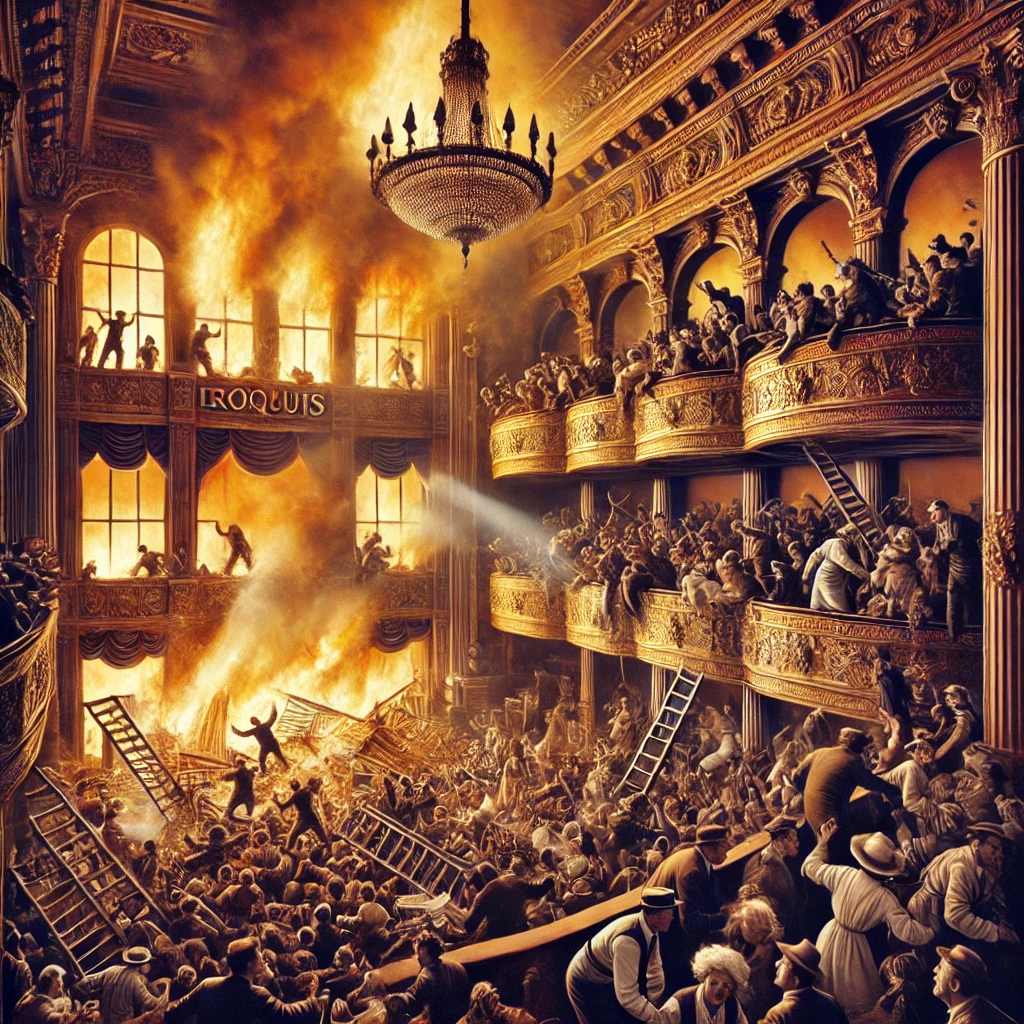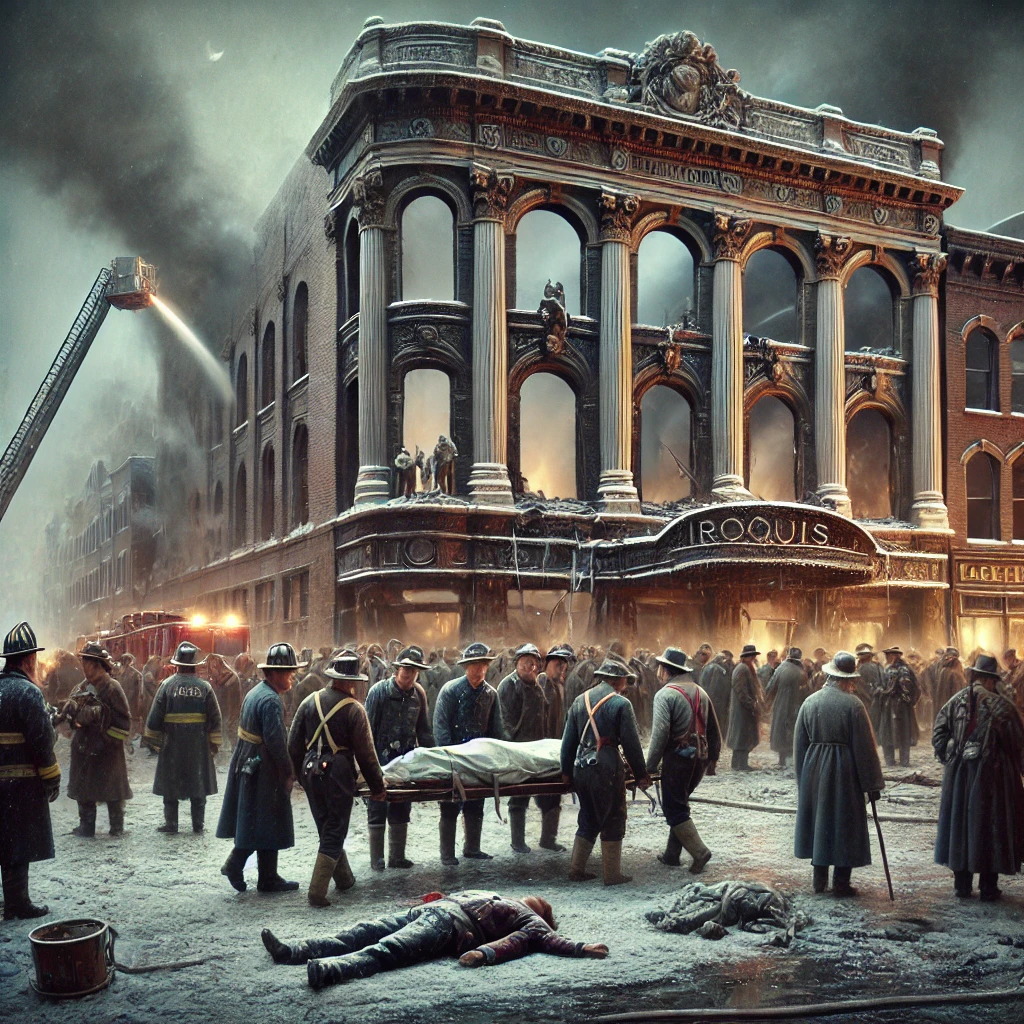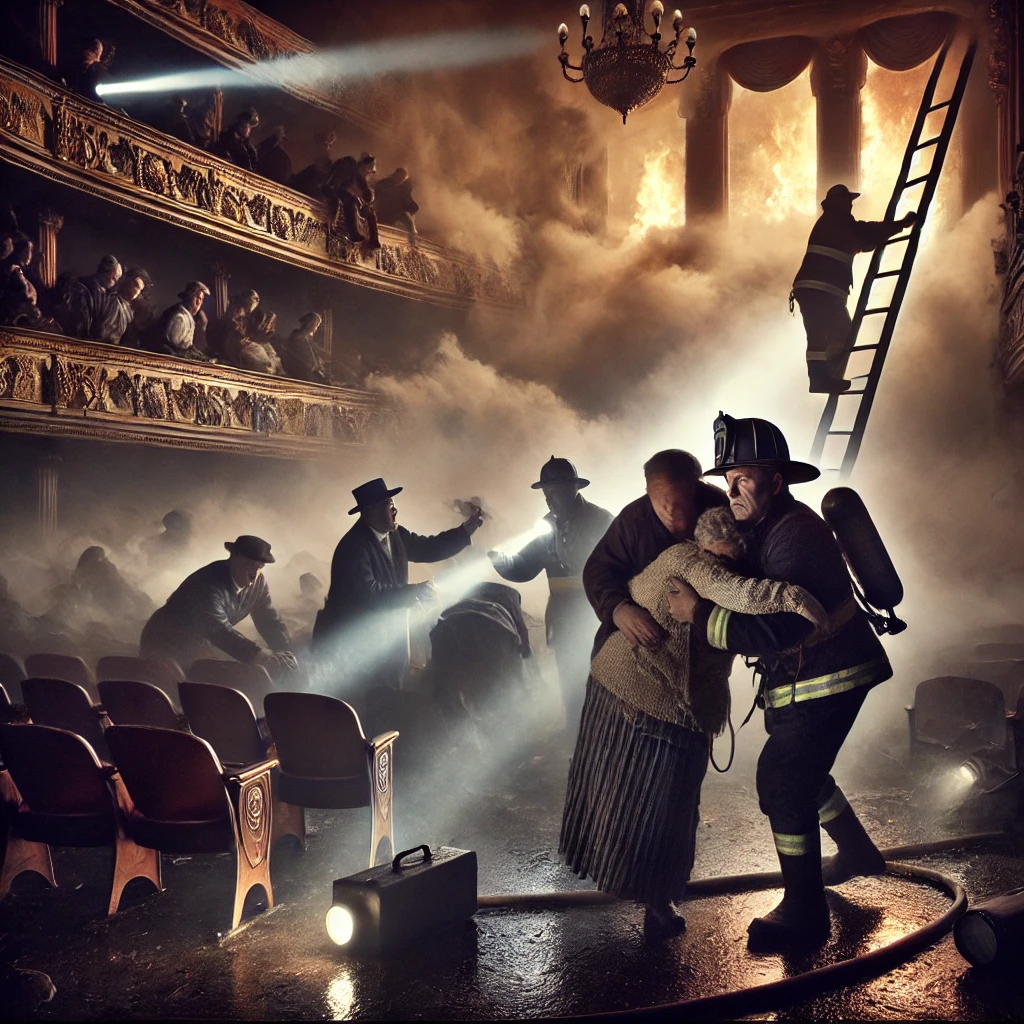On December 30th, 1903, a devastating fire broke out at the Iroquois Theater in Chicago, leading to one of the deadliest single-building fires in U.S. history. The fire, which occurred during a matinee performance of the musical Mr. Bluebeard, claimed the lives of at least 602 people, many of whom were women and children. The tragedy shocked the nation and prompted widespread changes in building safety codes, forever altering the way theaters and public spaces were designed and regulated.

The Events of December 30th, 1903
The Iroquois Theater, known for its opulence and state-of-the-art features, had opened just a few weeks earlier to great fanfare. On the fateful day of the fire, the theater was packed with approximately 1,700 people attending the afternoon performance. As the show progressed, a fire broke out on the stage, likely caused by an electrical fault in the theater’s stage lighting system. The fire spread quickly through the building, aided by the highly flammable materials used in its construction.
The panic that ensued was intense. Many people attempted to flee, but the exits were either inadequate or blocked. The theater’s design, which lacked sufficient fire escapes and had locked exit doors, contributed to the disaster. The building’s narrow corridors and crowded seating made it nearly impossible for people to escape in a timely manner. In the chaos, many were trapped inside, succumbing to the smoke and flames. The death toll was catastrophic, with hundreds perishing in the blaze or from smoke inhalation.

The Aftermath and Public Outcry
In the wake of the tragedy, the city of Chicago, as well as the nation, was left in shock. The fire at the Iroquois Theater highlighted the critical flaws in building safety regulations and the lack of enforcement of existing laws. Many of the victims were unable to escape because of insufficient exits and faulty safety mechanisms. The disaster also revealed the dangers of public spaces being designed without adequate consideration for fire hazards and crowd control.
The public outcry was swift, with many demanding reforms in building safety standards. In response, Chicago and other cities across the country implemented stricter building codes, including regulations on fire exits, safety lighting, and fireproof materials. The Iroquois Theater fire served as a catalyst for improving fire safety in theaters, auditoriums, and other public buildings, leading to long-term changes in how such spaces were constructed and maintained.
The Lasting Impact of the Tragedy
The Iroquois Theater fire left an indelible mark on the history of theater safety. In addition to inspiring new safety laws, it also brought attention to the need for proper fire drills, staff training, and emergency preparedness in public venues. These changes laid the groundwork for modern safety standards that continue to protect theatergoers and the general public today.

The tragedy also had a profound emotional impact on the city of Chicago and the families of the victims. The scale of the loss was unprecedented, and the haunting images of the fire’s aftermath were etched in the memories of many. To this day, the Iroquois Theater fire is remembered as one of the worst disasters in the history of American theater, serving as a painful reminder of the importance of public safety.
The Iroquois Theater fire on December 30th, 1903, stands as one of the deadliest fires in U.S. history, leaving a profound impact on building safety regulations and public awareness. The disaster not only marked a tragic loss of life but also sparked significant changes in how theaters and public spaces were designed and regulated. The fire’s legacy serves as a reminder of the need for vigilance and preparedness in protecting the safety of people in public spaces, ensuring that such a tragedy would never happen again.
